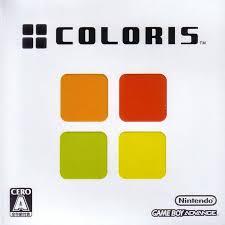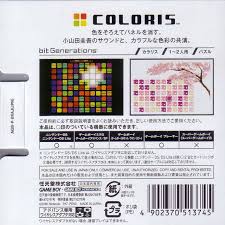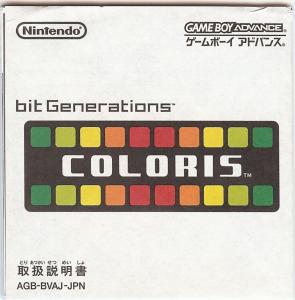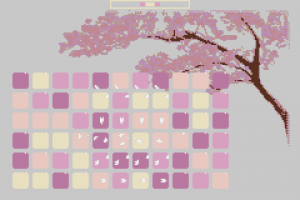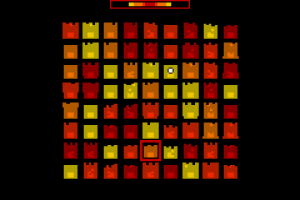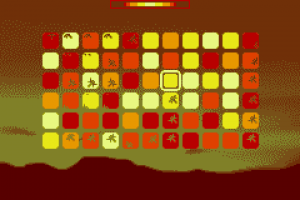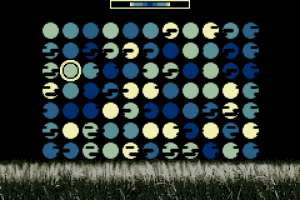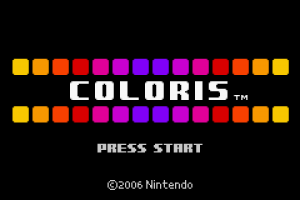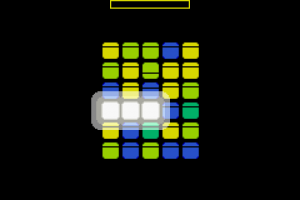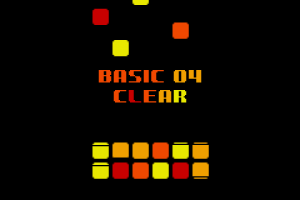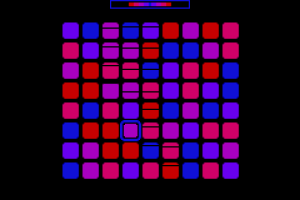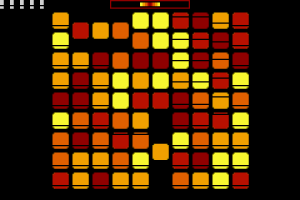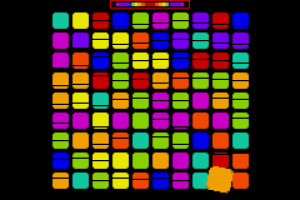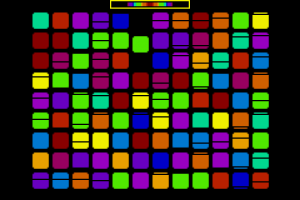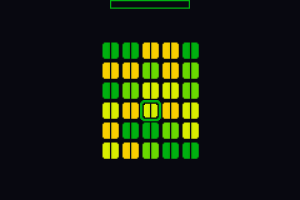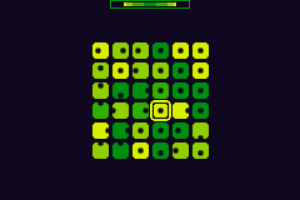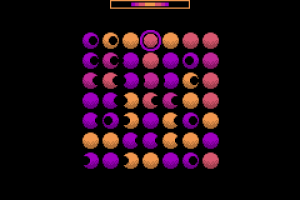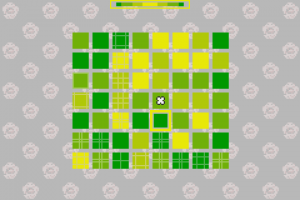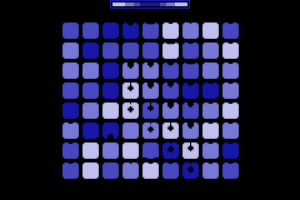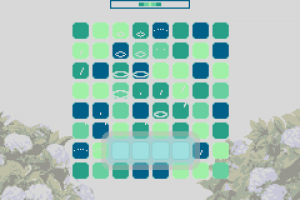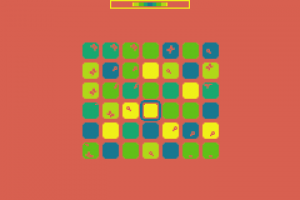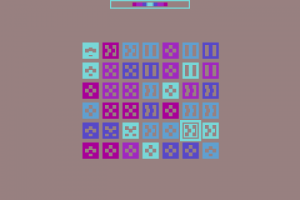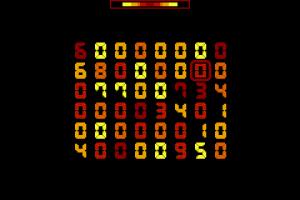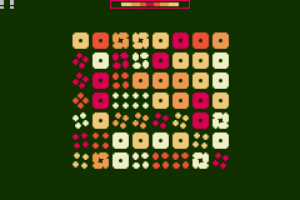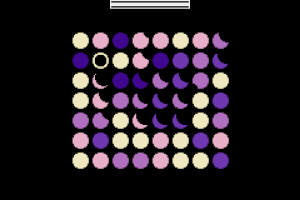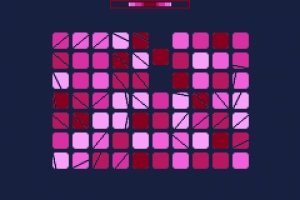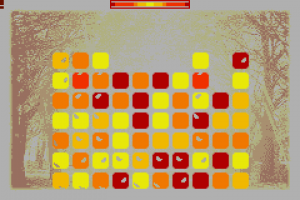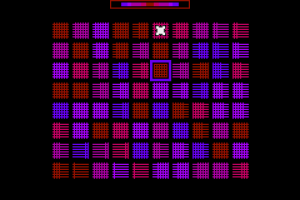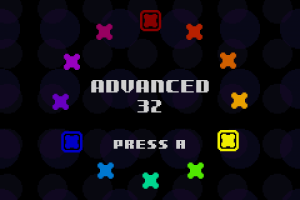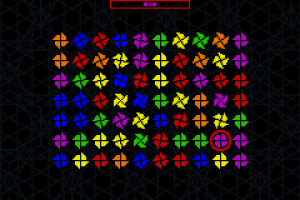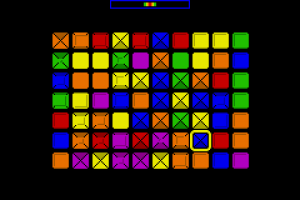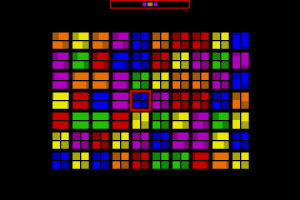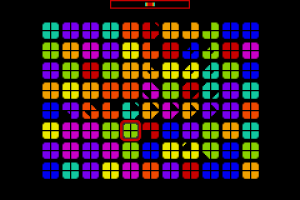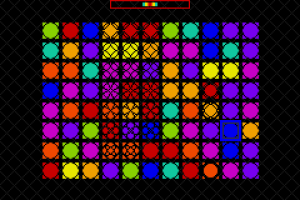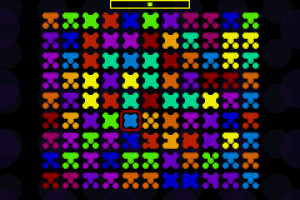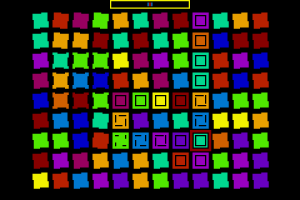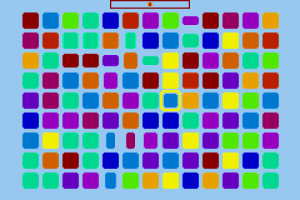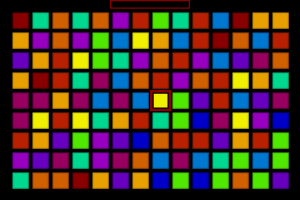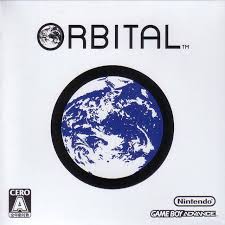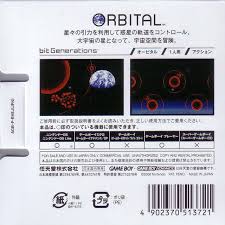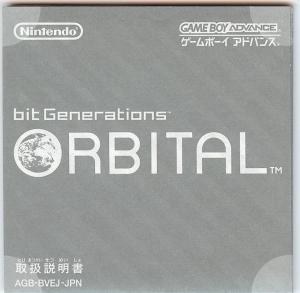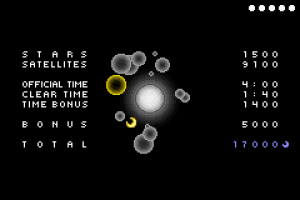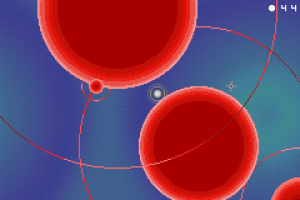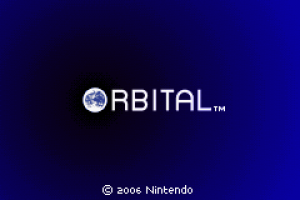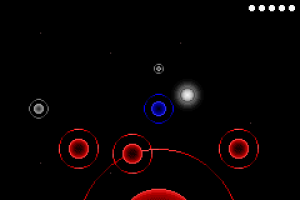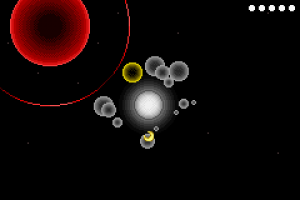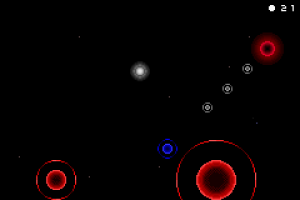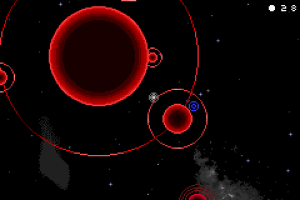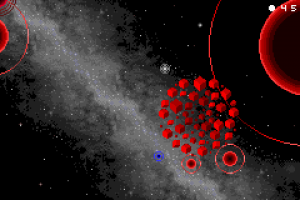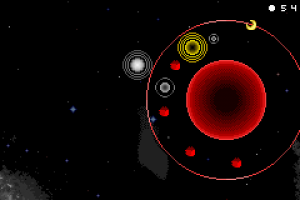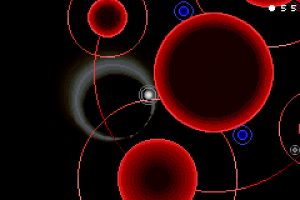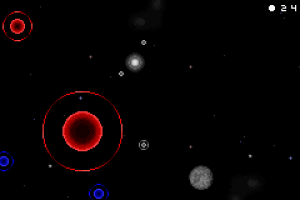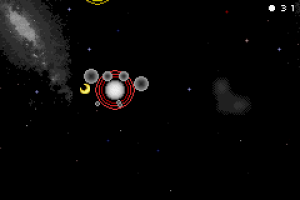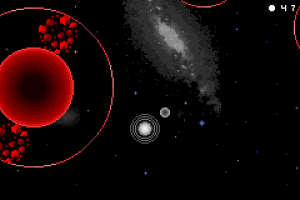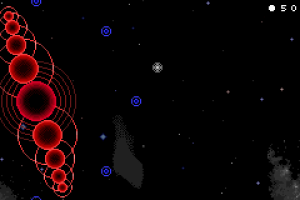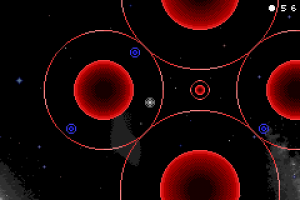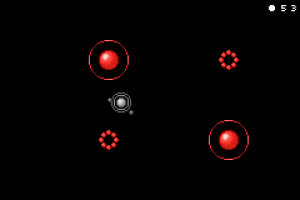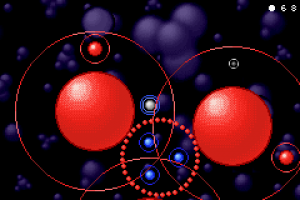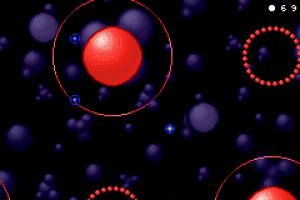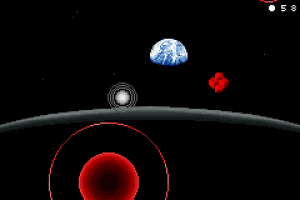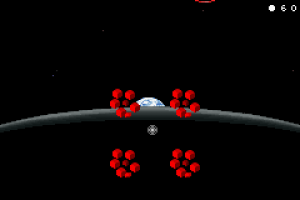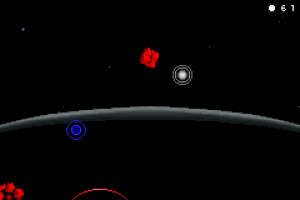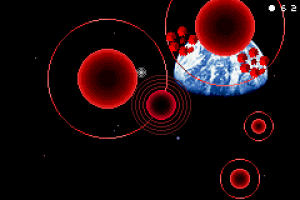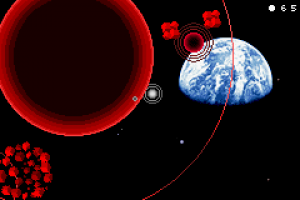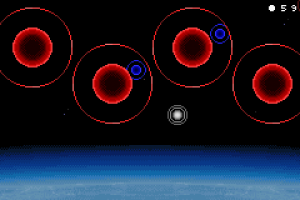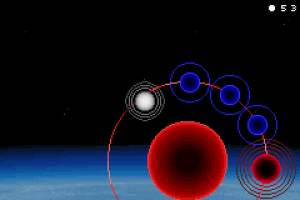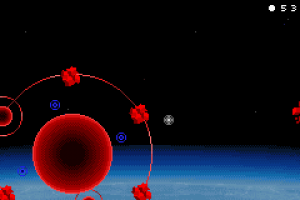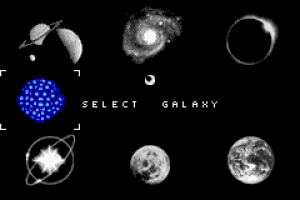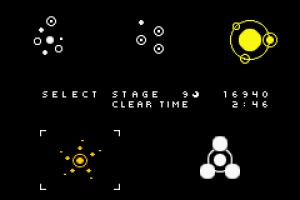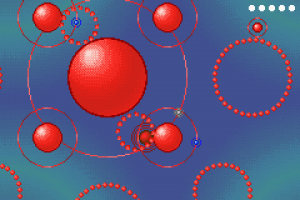|
Series 1: |
Series 2: |
Series 2 (con't): |
|
|
Coloris is the other puzzle game of the bit Generations series, and features a relaxed and even more thought-based approach than Dialhex. The game takes the appearance of a simple match three puzzler, the key difference here is that the player works with a color-changing cursor that is used to bring a grid of tiles up or down its respective spectrum.
The controls are as one would expect, move with the D-Pad and spin the tiles into new colors with A. Early levels start with 4 different colors; later changed to 5. The spectrums for these levels only have two cursors to work with, causing them to be linear, and running into the color extremes (shown as the tile jolting) can become a bit more than common. In larger palettes there are three primary colored cursors instead making the spectrum a color wheel.
The problem with this is that the highly gradated colors might become troublesome to tell apart, as in, is this red and blue, or red and yellow? And yes, this is important since using a cursor complementary to a tile’s color (like blue to orange) will gray out the color.
Speaking of gray tiles, these tiles are unusable and must be cleared with two adjacent matches. Normally they appear when tiles haven’t been moved or cleared. Thankfully though, the blocks warn you this is about to happen with a sped up version of their animation.
Just like Dialhex, there is a main mode, (here called “Clear Mode”, with a total of 50 levels to finish) and an endless mode, “Score Mode”. In the main game, you work to fill up the Color Frame at the top of the screen, with it also giving you the next cursor color. Here, the gray tiles are a pain in the neck to deal with as they don’t allow you to fill up the meter with any on screen, preventing you from beating the level.
The levels are split into 15 Basic levels and 35 Advanced. The Advanced series’ levels are unlocked by completing the Basic levels, so if you finish all 15 of them you’ll have quick access to any level in the Advanced series. All of the 35 special levels have unique tilesets and highly detailed backgrounds like cherry blossom petals framed by a sakura tree, bubbling glasses of pixelated beverages, dragonflies backed by a nice sunset, or clouds above a quiet meadow at nighttime.
Although it’s just an extra, it’s so pretty.
“Score Mode” is strange in that it does away with the pretty backdrops and sticks with the simple ones from Basic, and you are simply given the basic spectrums and color wheels. As the only goal here is to get a high score, gray tiles don’t have any real impeding presence other than limiting the tiles available. A sleep mode is also accessible anywhere during play through the noisy pause screen, allowing saved battery life on your GBA.
There is a VS mode in this game, although it doesn’t appear on the title screen without a wireless adapter connected. Each player can choose whatever stage from Clear they want to, and the goal here is to crowd your opponent’s screen with gray squares by chaining combos (neatly represented by exclamation marks in the upper-left corner of the screen). The gray squares invite themselves in on the bottom rows to prevent from empty spaces, and the opponent’s screen is also, to some extent, visible through a meter on the left with the amount of colored, light gray, dark gray, and blank spaces neatly shown. “VS” does take advantage of the unique gray tile mechanic, without needing to bring anything new to the table.
Power-ups are in every mode and have varying uses depending on its tile’s location or color
Power-Up Panels
(Caravan)-0015.png)
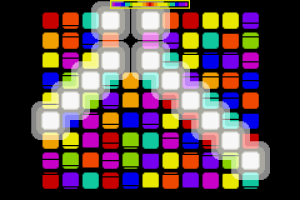
Deletes any tiles in the paths of its vertices. With correct use this can fill up the Color Frame in little time.
(Caravan)-0042.png)
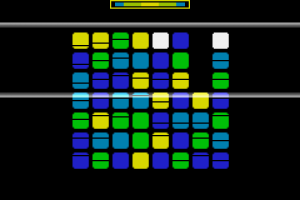
Deletes any tiles of its color. Saves all of the time in the world when it’s gray.
The aesthetics of Coloris are at a gentle peak of the bit Generations series, wnd the sound design of the game was provided by Japanese Shibuya-kei pioneer and multi-instrumentalist Keigo Oyamada (AKA Cornelius). Many of the sounds are from his albums "Point" and "Fantasma" and they are perfect for the game in places like that of the guitar and piano chords at the beginning of each stage and the synthesized upward flinging animations at the end of them. The game doesn’t have any real music, minus the music video and credits after beating “Clear Mode”. To make up for it, the various colored tiles make pitches when passed over, and is greatly complemented by the soft hum of the Advanced levels. It’s all too "Sensuous" for first-time consumption.
Coloris will be a cause of aggravation for some, but those who don’t find it as such will discover a slow-paced puzzler backed by the immersion of ambient sound and visuals. Compared to other match-threes, the game is so much more thought intuitive and super avant-garde; it’s a soothing break for the mind.
Links:
Cornelius Music Video: The music video in Coloris. Music by Keigo Oyamada
Coloris Staff Credits: The actual staff credits.
Quick Info:
|
Developer: |
|
|
Publisher: |
|
|
Composer: |
|
|
Genre: |
|
|
Themes: |
COLORIS (GBA)
COLORIS (GBA)
COLORIS (GBA)
COLORIS (GBA)
COLORIS (GBA)
COLORIS (GBA)
COLORIS (GBA)
Additional Advanced Series Screenshots
Orbital can be looked, at to a degree, as the true sequel to Katamari Damacy, where after the player has made a star out of everything on the planet, they are tasked to continue the fun by growing it and grabbing satellites for it’s own solar system.
However, the premise doesn’t just end there, the star can only maneuver by attracting (A) itself to and repelling (B) itself from other stars. The basic goal of Orbital has players snatching a goal star that is either the same size or smaller than your star, and since each level always starts out with a very small star, you need to tour the level, collecting stars of the same size in order to grow. As the same-size or smaller star’s gravitational pull is equal or worse than your own, stages generally have larger red stars that can be used instead to propel your star through the course. Red stars can’t be absorbed and upon hitting them will cause the player to lose a life (five of which are normally given at the start of each level; more on that in just a bit), yet their influence of gravity is also important in that the player can pull themselves into the orbit of the star. Smaller stars and such are often placed within range of these orbits, making the red stars amphibious in their use, and flinging in and out of these orbits quickly to other stars’ orbits being a major skill. It helps greatly to look at the surrounding obstacles by using the D-Pad when in orbit or by pressing the Select button to view everything on stage.
When stars have become smaller than the player, they turn gray and can be caught in their own orbit (namely, the G-line) when passed at the right angle; adding to the overall life count when proceeding to the next level. After the player becomes equal in size to the goal star, it will make itself more visible by becoming yellow in addition to causing a moon to appear. The moon adds more difficulty to the game, collection-wise, as well as bonus points and a crescent symbol to your overall score count. They can not be absorbed and will instead be knocked away upon contact, asking for a replay of the level in order to get the star in the player’s orbit.
The boundaryless stages are unlocked one by one for a total of 40 with the last five (named Final) unlocked by all of the previous levels’ moon gatherings. No two level designs are the same, and just like any good platformer with levels modeled around a single idea or gimmick, Orbital has levels featuring ideas such as: clever use of orbits to avoid hazards such as asteroids and rings of meteorites, slipping in and out of a fast-moving train of stars, drifting through a field of asteroids with only one star to be attracted to, and picking satellites off of the ends of a set of stars akin to a kid spinning in circles with his arms wide open.
The learning scope is intelligent like that of Dialhex, but different in that it requires focus and knowledge beforehand on where to go and what to do. Gripes on the design will most likely precipitate from the common ping-ponging of crashes between stars on complex levels, and possibly (for those who are picky), the cooing noise the player star make when it is attracting or repelling itself to something. A few other things to note concern: the momentum you have greatly differs depending on size; being a large star needs such a great amount of preparation for movement that therefore it is advised that you really only grow to the size necessary to complete the level. At least two stages even allow for every star to be absorbed, leaving only you and a nonabsorbable goal star on the map. Gray stars can also cause a growth spurt, but only if a certain amount and size of them is consumed; lastly, a small number of galaxies contain constellations in which two same-size stars must be gathered before enlarging. Just note, this isn’t a glitch as this was possibly done to retain a miniscule star size.
The scoring system, as the game’s pictures may suggest, is somewhat detailed; adding plenty of things to consider when attempting to stash satellites. Wavering out and about from stars occasionally takes players off path to more risky and time consuming endeavors which will certainly hamper portions of the final score on a level.
Most levels do not have this many satellites available, but it is fun to challenge yourself like such.
Stars
Each star you absorb will bank you 300 points, and the size of them doesn’t change this. As there is always a minimum of one star absorbed, you will always earn at least 300 points from this section of the score chart.
Satellites
Every satellite caught in the G-line is worth 700 points. Again their size doesn’t matter, and therefore you should most definitely seek satellites over stars for their points and additional lives. The goal star also counts as a satellite, however the moon only counts for an extra life.
Time
The “Official Time” is the set time to beat in order to earn a time bonus. The time bonus is simply the “Official Time” subtracted by the “Clear Time” times ten; the time unit measured is in seconds. So, with a set time of six minutes (360 seconds) minus a clear time of five minutes (300 seconds) there would be a time bonus of 600 points.
Bonus
5000 for a captured moon and no crashes
3000 with no crashes and no moon
2000 with the moon and at least one crash
Gameplay Tips
-The stages loop infinitely, and so if you find yourself unable to maneuver between the stars, it may help to use free-look (Select) and exit the map to come back out on the other side of it.
-Same-size red stars have conflicting gravities when caught in between; go around the outside of them in order to avoid the complications with attractions and repulsions caused.
-You will lose a 3000 point bonus if you do this, but if you need to reach a star and have too many obstacles in your way intentional crashing is acceptable. Same is true for those trying to reach the moon and are at risk of catching the goal star. Do you have more than enough lives in your possession, crash into it; it saves time!
Visually speaking, in a similar manner to Coloris, Orbital features many detailed and appealing backgrounds that feature various instances of parallax scrolling on the bright spiral galaxies, purple stellular globs, and the earth’s atmosphere.
Stars at the surface of the earth? Strange.
The stars themselves often change their textures with some hosting soft flattened appearances and others having shiny rounded figures. On rarer occasions, they may even have animations or deformities such as lumps, UFOs, or lightning bolts that bounce from star to star.
Aesthetics in Orbital are still up to the task, considering the silky smooth animations a game like this requires, it’s even at work in places like the stage select where anything under the cursor gently undulates. Sound effects are useful during play on instances of entering orbits, and are just generally charming to listen to. The ambient hum that opens each stage sees to that the calm noises and wind chime-like sounds of the early stages evolve into pleasing radio satellite feedback and soothing synthesized chords. The cheery piano tune that satellites make contrast well with the late-night plinks of the moon theme as an added bonus.
Orbital is regarded as the best game of the bit Generations series and it is simple to see why. It truly encapsulates the general “Gameplay for the Masses” ideal with a concept and difficulty that ensures widespread enjoyability, and it makes one think, isn’t the entire series chock full with satisfying gameplay approaches? However, the game may be just as difficult to obtain as Dotstream and generally has the same price range.
Links:
Bit Generations: Orbital - 6th Galaxy[2/2] (Stages 29-30)+Credits: Stages 29 and 30 are played here; the first and tranquil ending is also shown here as well.
Bit Generations: Orbital - Final Galaxy[2/2]+Alternate Credits: Footage of the final level of the game and the strange alternate credits " Ending' "
Quick Info:
|
Developer: |
|
|
Publisher: |
|
|
Genre: |
|
|
Themes: |
ORBITAL (GBA)
ORBITAL (GBA)
ORBITAL (GBA)
ORBITAL (GBA)
ORBITAL (GBA)
ORBITAL (GBA)
Additional Screenshots
|
Series 1: |
Series 2: |
Series 2 (con't): |
|
|
